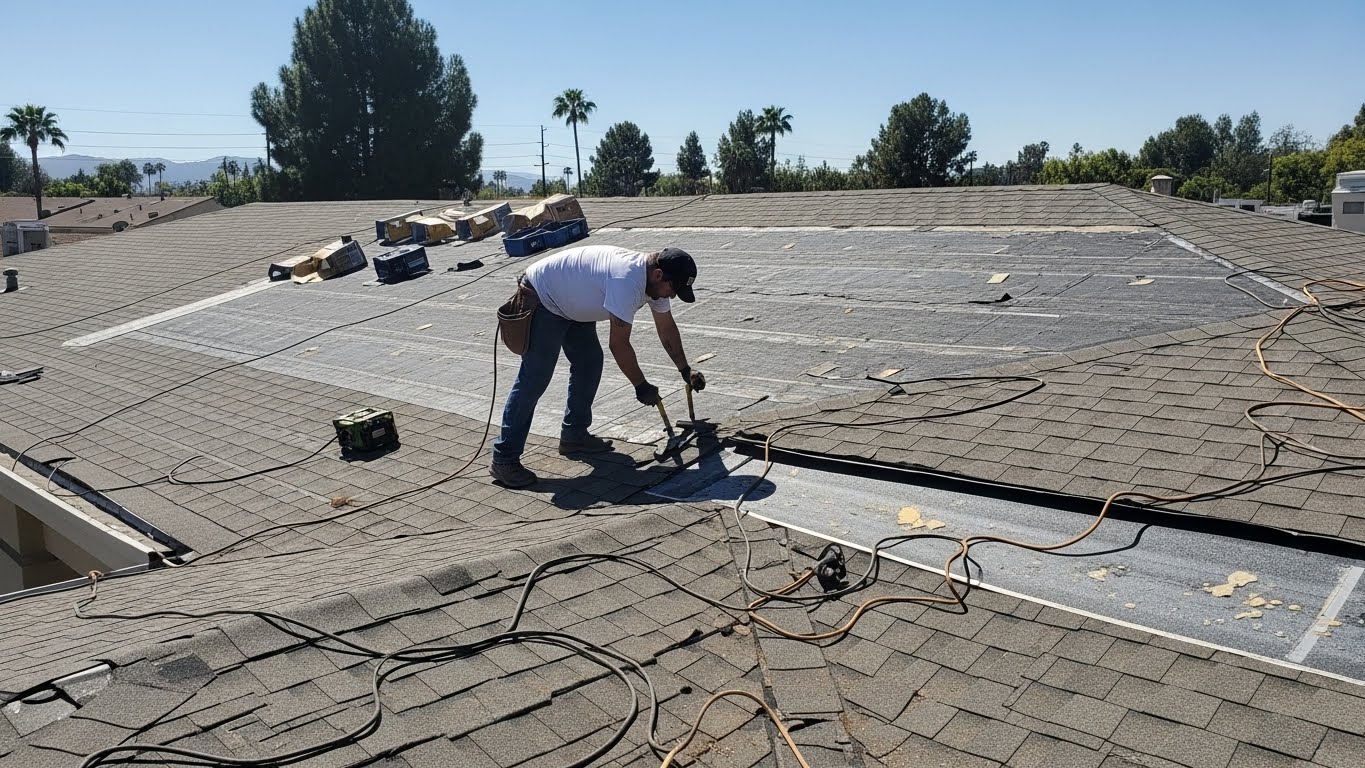Flat roofing has become a popular choice for modern buildings, offering a sleek design and numerous practical benefits. Whether you own a residential or commercial property, understanding flat roofing systems is essential to ensure durability, energy efficiency, and long-term cost savings. In this guide, we’ll explore everything you need to know, including materials, benefits, and professional installation tips.
What is Flat Roofing and How Does It Work?
Flat roofing is a type of roof with minimal slope, usually designed to keep the surface level or slightly angled for water drainage. While flat roofs are most commonly seen on commercial buildings, they are increasingly being used for residential properties due to their clean, modern aesthetic.
Flat roofing systems consist of multiple layers, including insulation, waterproof membranes, and protective coatings, to ensure strength and durability. Proper design and installation play a vital role in preventing water pooling and improving the roof’s lifespan.
The Benefits of Choosing Flat Roofing Systems
One of the key advantages of flat roofing is its cost-effectiveness. Flat roofs require fewer materials and labor during installation, making them more affordable compared to traditional sloped roofs.
Another benefit is the versatility of flat roofs. They provide additional usable space, which can be transformed into rooftop gardens, solar panel installations, or even outdoor lounges. This makes flat roofing an excellent option for maximizing the functionality of your property.
Additionally, flat roofs offer energy efficiency. With the right insulation and reflective materials, flat roofing can help reduce heating and cooling costs, keeping your building comfortable year-round.
Popular Materials Used in Flat Roofing Systems
When it comes to flat roofing, the material you choose will impact the longevity and performance of your roof. Here are some of the most common options:
- Built-Up Roofing (BUR): A traditional system made of layers of tar and gravel, offering excellent durability.
- Modified Bitumen Roofing: Combines asphalt and polymers for enhanced strength and flexibility.
- EPDM (Rubber Roofing): A lightweight and affordable option known for its waterproofing properties.
- TPO and PVC Roofing: These modern synthetic materials are energy-efficient and highly resistant to UV rays.
Each material has its advantages, and consulting with a professional roofer can help you select the best option for your needs.
Why Professional Installation is Crucial for Flat Roofing
While flat roofing offers numerous benefits, professional installation is essential to prevent potential issues such as leaks, poor drainage, and structural damage. A qualified roofing contractor will ensure the proper design, material selection, and installation techniques are used.
Flat roofs require precise workmanship, especially when it comes to waterproof membranes and drainage systems. Investing in professional installation not only guarantees durability but also saves you money on repairs and maintenance in the long run.
Flat roofing is an excellent solution for both residential and commercial properties, offering durability, cost savings, and added functionality. By understanding the benefits, materials, and importance of professional installation, you can make an informed decision to enhance the value and efficiency of your building.
If you’re considering flat roofing for your property, consult with a trusted contractor to explore the best solutions tailored to your needs.
Read More:





